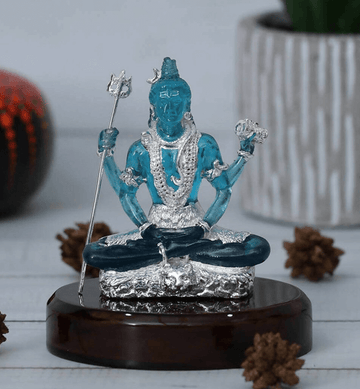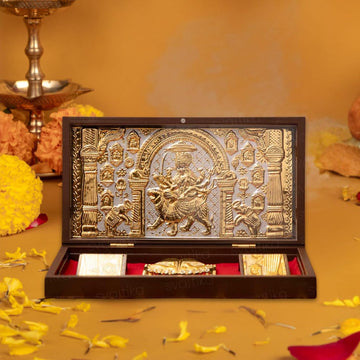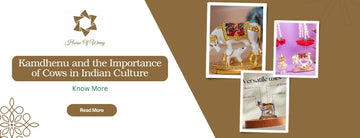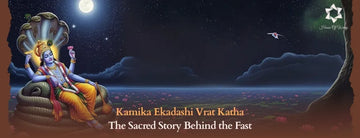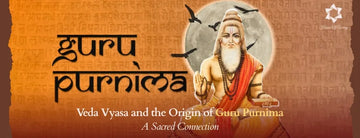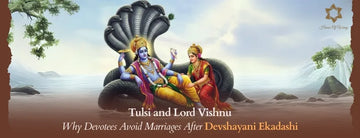Kamdhenu: the sacred cow in India’s spiritual heritage and modern living
Introduction: The Reverence for Cows in Indian Culture
Have you ever caught the eye of a cow, only to be hit by a sudden rush of peace? In India, it's not a coincidence at all, it's in our cultural fabric, a bond thousands of years strong. The cow becomes more than her biological designation here; she is motherhood, altruistic giving, and deity in a form we can feel. For us who've wandered away from our roots, constructing lives in concrete jungles or oceans away, these ancient symbols are a bridge back to something deeply known.
Step into an Indian household during a housewarming ceremony or wedding, and chances are you'll catch sight of a Kamdhenu Statue standing prominently. No decoration, no superstition, just deep reverence. But why do families across generations place this sacred cow statue in positions of honor? Why does this specific divine symbol still resonate in modern homes?
Kamdhenu in Mythology
Kamdhenu, also known as Surabhi, is the divine cow of Hindu mythology, a wish-granting cow that emerged during the Samudra Manthan. According to the Puranas, she lived in Sage Vashishta’s ashram and sustained both body and soul.
Her form is richly symbolic, often depicted with miniature gods and goddesses within her body. This is a profound truth in Hindu beliefs about cows: that divinity lives in all beings and that selfless givers are closest to the sacred.
Kamadhenu symbolism
The name Kamdhenu breaks down into “Kam” (desire) and “Dhenu” (cow). It signifies a cow that fulfills all wishes. In Indian culture and cows are seen not just as animals but as symbols of prosperity, nurturing, and righteousness. Kamdhenu stands as a beacon of abundance and spiritual grace.
Having a Kamdhenu statue or figurine at home is believed to attract prosperity and harmony. It’s not superstition, it's symbolism. Kamdhenu invites us to live in dharma (righteousness), patience, and gratitude.
A Spiritual Connection: The Cow as a Sacred Object of Purity
For the spiritual person, the cow is not just an object; she is the link between matter and spirit. The satvik milk she provides is considered to have clarity of mind and purity in the body. Cow ghee in yogic and ayurvedic practices aids in warming the digestive fire and can help in deep meditation.
Kamdhenu cow significance reminds us to live with selfless service and spiritual clarity. Keeping a Kamdhenu statue at home or work helps cultivate a protective, peaceful, and prosperous atmosphere.
The Importance of Cows in the Rural and Agricultural Life of India
In addition to sacred offerings, the cow has really been helpful in the economy of India. Cow gives us milk, dung for cooking and farming, and a link or companion to us in our villages. Most families refer to Gau Mata, the mother.
The substance of cattle is not merely mythic, she represents a paradigm of ecologically and culturally sound living, whereby human beings could exist with nature. The Kamdhenu statue memorializes a memory, but also reminds us of the future of that interplay.
Ahimsa: Non-Violence towards Cows.
Ahimsa (non-violence) is the core of Hindu ethics. Mahatma Gandhi once said, “The cow is a poem of pity.” To harm her is to break the covenant of compassion we owe to all life.
To honor Sacred cows in Hinduism and their descendants is to support ethical living, spiritual awareness, and ecological sustainability. It’s not just religion, it’s a social, moral, and environmental movement.
Divine cows in Hinduism: Celebrating India’s Native Breeds
Across India, sacred cow breeds such as Gir (Gujarat), Sahiwal (Punjab), and Hallikar (Karnataka) are revered. Each is seen as part of Kamdhenu’s lineage, carrying both divine energy and practical agricultural benefits.
Preserving these breeds honors the Importance of cows India and supports biodiversity and indigenous livestock conservation.
The Cultural Importance of Cows in Celebrations and Festivals
Cows hold a prominent position in our celebrations, from Diwali to Makar Sankranti. Cows are bathed with turmeric and flower garlands in Tamil Nadu during Pongal. Gopashtami celebrates Krishna's great fondness for cows with songs praising cows and processions in Braj.
Adorning our houses with a Kamdhenu statue during festivals doesn't just bring a festive decor to our home; it establishes a soulful connection with Indian culture and cows.
Cow Milk - A Sacred Gift in Hinduism
The cow's milk has the status of being a heavenly gift in Hinduism and thus it is much more than simply sustenance. The cow's milk is applied during abhishekams, and it is assumed to be chaste, energizing, and purifying. Krishna is forever the Cowherd, and his leelas are the association with the fragrance of butter and milk.
For the spiritually inclined, mindful consumption of cow milk becomes a daily sacred act, an offering of gratitude rooted in Hindu beliefs about cows.
The Ethical Treatment of Cows in Contemporary India
In contemporary India, cows are at risk because of urbanization and industrialization, but initiatives such as cow shelters (gaushalas), vegan products, and mindful farming are bringing old ethics back to life.
At the House of Wemy, we support gifting and home décor that fosters compassionate consumerism. Our Kamdhenu gifts collection represents this fusion of art, ethics, and tradition.
The Importance of Cow Protection Movements Today
Cow protection organizations are still active across India today, just as they have been for decades, and they do so, not simply out of sentiment, but also out of Environmental responsibility, Spiritual and Cultural accountability. Cow protection movements today advocate for sustainable dairy, cruelty-free production, and the revival of Vedic values.
When you buy a Kamdhenu statue from the House of Wemy, you contribute to artisans and communities upholding these traditions with integrity.
The Practical ‘How-To’ Guide: Inviting Kamdhenu’s auspicious energies into your home.
-
That said, here are some ways to intentionally invite the energies of Kamdhenu into your life:
-
Location: Place the Kamdhenu statue in your living area or prayer space, ideally facing east or north
-
Time to Install it: Install the statue on an auspicious day
-
Daily Ritual: Anoint a diya, flowered-fresh offerings, chant “Om Surabhyai Namah”, with complete devotion
-
Maintenance: Clean the statue and treat it with the same reverence of care, and concern as your deity.
Astrology & Numerology Reflections
In Vedic astrology, cows are associated with Venus, the planet of beauty, love, and abundance. Placing a Kamdhenu statue at home harmonizes Venus energy, shielding the space from negativity and inviting prosperity.
Numerologically, the number 6 (ruled by Venus) resonates with Kamdhenu cow significance. Install her on the 6th, 15th, or 24th of the month to align with this energetic frequency.
Collective & Emotional Response
One of our readers shared how gifting her daughter a Kamdhenu figurine evoked stories of her grandmother’s Krishna bhajans and the scent of ghee-laden laddoos in temple halls. For many in the diaspora, the Kamdhenu statue becomes a symbol of intergenerational love and spiritual continuity.
At Wemy, we believe Kamdhenu gifts should evoke not only joy but also memory, heritage, and belonging.
Final Thoughts: The Unbroken Thread Between Bovine and Being
Kamdhenu is not just mythical imagery; she represents the living heartbeat of Indian philosophical thought; our respect for nature, our recognition of the connections of life, and our appreciation for the bounty of the earth. When we bring her into our homes, we have not just decorated. We are reasserting the wisdom of centuries and reaffirming who we are.
Before you continue scrolling, pause and consider: How are you personally sustaining this spiritual inheritance? What small action might you take today to honor these traditions that have nourished countless generations?
Perhaps your journey deepens with a mindful choice bringing a Kamdhenu figure from the House of Wemy into your space, not as a mere possession, but as a daily reminder of devotion and connection.
Explore Wemy’s hand-carved Kamdhenu gifts, each one a blend of heritage, intention, and aesthetic grace.

